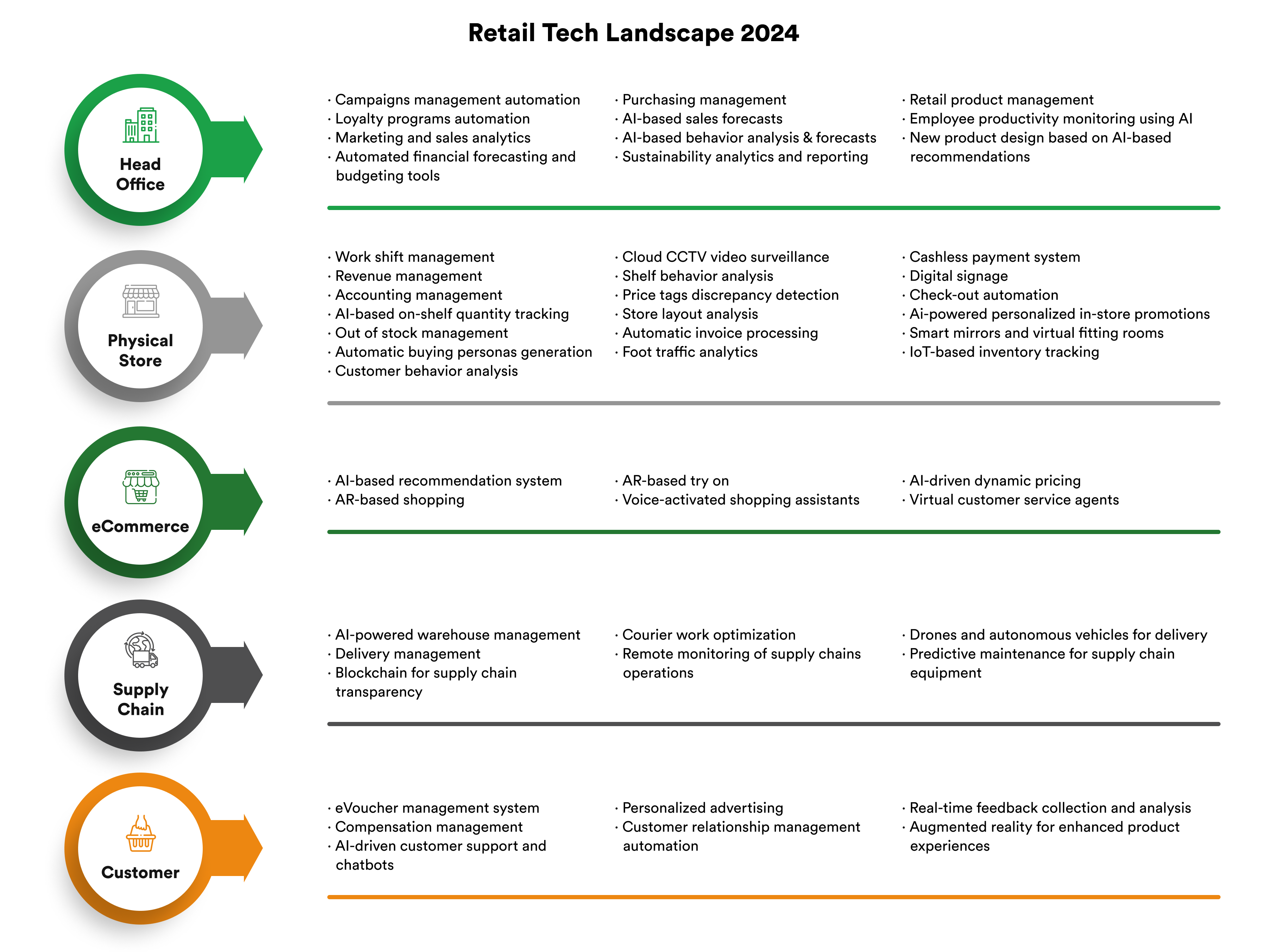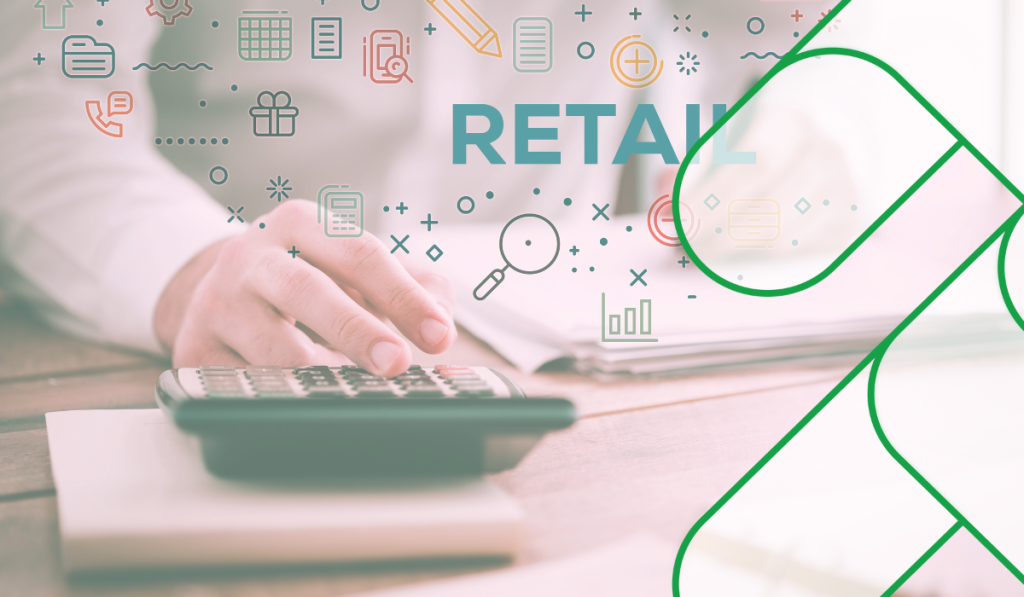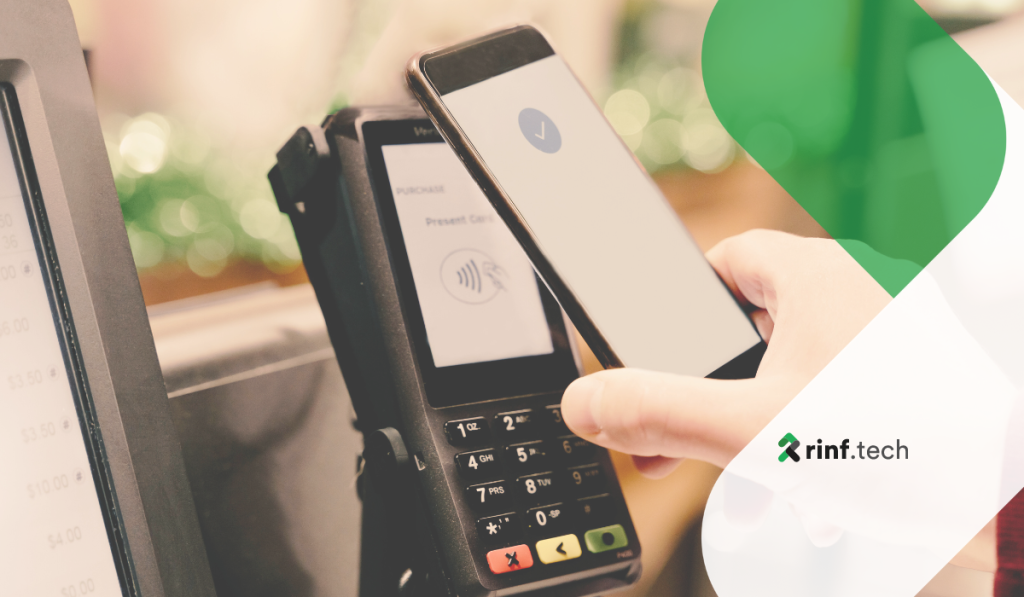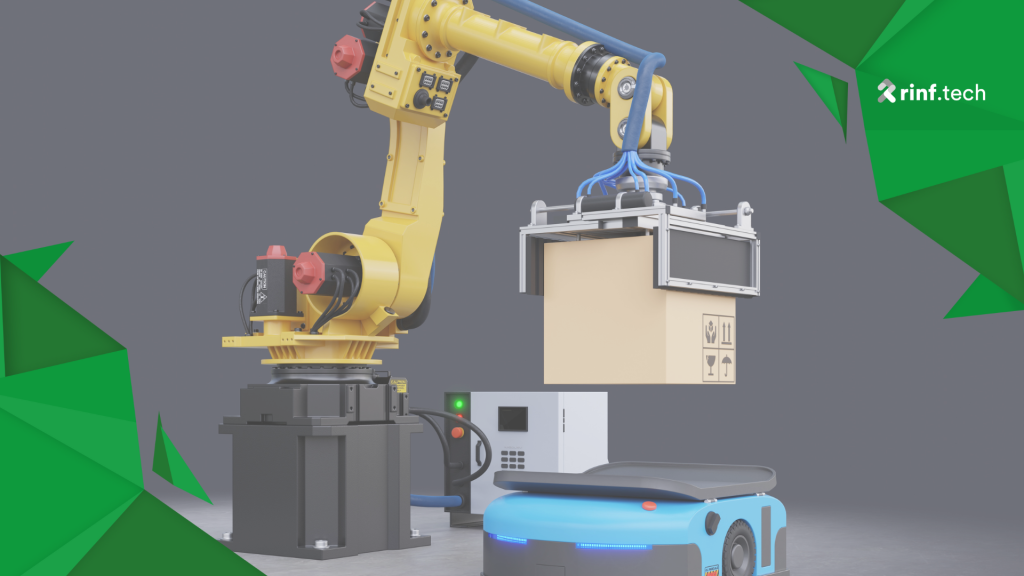
Retail Technology has advanced significantly throughout the years, with earlier breakthroughs laying the foundation for more recent developments. The retail industry was previously changed by technology like barcode scanners, electronic point-of-sale (POS) systems, and customer relationship management (CRM) software. These developments streamlined checkout procedures, enhanced inventory management, and offered better customer insights.
In this article, we’ll explore a current retail technology landscape and trends shaping the industry, retail tech use cases, as well as what the future holds for it.
Artificial intelligence and machine learning technologies are revolutionizing the retail sector by offering intelligent solutions to improve consumer interactions and boost sales. Retailers may now provide clients with immediate and individualized support thanks to the growing use of AI-powered chatbots in customer care.
These chatbots can respond to questions, provide product suggestions, and even complete purchases. AI is used by virtual shopping assistants to give clients individualized shopping experiences, directing them through the purchasing process and making recommendations for valuable products based on their tastes and browsing history. In addition, machine learning algorithms examine a wealth of consumer data to produce precise and focused product suggestions that boost customer happiness and sales conversion rates.
The Internet of Things transforms the retail industry by connecting multiple devices and enabling real-time data collection and analysis. Retailers can adopt smart shelves that automatically detect product levels and give warnings for replenishment to optimize inventory management. Retailers may collect helpful information about consumer behavior, preferences, and even biometrics from connected wearables to create more individualized marketing campaigns and better customer experiences.
IoT-enabled smart shopping carts can speed up the checkout process by automatically scanning items and processing payments, which lowers friction and wait times. Additionally, real-time visibility into product movement, optimized delivery routes, and reduced stockouts are all benefits of IoT-powered supply chain management systems. These solutions increase efficiency.
Cloud-based video analytics solutions transform Traditional CCTV systems into practical retail intelligence tools. These systems may track and examine customer behavior using AI algorithms, giving merchants knowledge that can be used to improve shop designs, product placements, and marketing tactics.
Modern CCTV systems with facial recognition technology can monitor foot traffic patterns, track consumer demographics, and spot potential security risks. Retailers can use this data to make data-driven decisions to increase store security and operational efficiency. Additionally, retailers may access and manage numerous shop locations remotely using cloud-based CCTV analytics solutions, giving them centralized control and real-time monitoring.
By providing immersive and engaging experiences, augmented reality and virtual reality technologies are changing how customers shop. Customers may visually experiment with things, picture furniture in their homes, or see how makeup will look on them with AR applications. These virtual try-on options boost consumer confidence and decrease uncertainty by bridging the gap between online and offline buying experiences. Customers can tour virtual storefronts, examine products, and make purchases in surroundings created using VR technologies. By utilizing AR and VR technology, retailers offer distinctive and captivating experiences that foster customer engagement, raise brand loyalty, and enhance sales.
Retailers increasingly implement robots and automation technologies to boost productivity, cut costs, and streamline operations. Robots are used for various jobs, including order fulfillment, customer support, and inventory management. RFID-enabled autonomous robots may move through retail aisles, check inventory, and restock supplies. Customers may swiftly scan and pay for their products using automated checkout systems, including self-checkout kiosks, decreasing wait times, and improving the shopping experience. Robots can also help warehouse operations by quickly and precisely choosing and packing things. By incorporating robotics and automation, retailers can streamline processes, boost productivity, and reallocate human workers to more value-added duties.
Blockchain technology enables safe, open transactions for supply chain management and retail payment systems. Retailers may use blockchain technology to develop secure, decentralized payment systems that will speed up transactions and lower the chance of fraud. Through seamless and interoperable rewards earning and redemption across various retailers, blockchain-based loyalty programs increase customer engagement and retention.
Additionally, cryptocurrency is being investigated as a potential alternative payment option, providing customers with convenience and flexibility when making transactions. By implementing blockchain and cryptocurrency solutions, retailers may improve trust, transparency, and efficiency in their payment systems and supply chain processes.

Making the customer experience better is one of the primary uses of retail technology. Retailers can learn important information about client preferences, behavior, and purchase history by utilizing customer analytics and data. They can use this information to give individualized advice, focused promotions, and specialized marketing initiatives.
With the help of chatbots and virtual shopping assistants, advanced customer relationship management (CRM) systems with AI and machine learning capabilities may automate and enhance client interactions. Retailers can design individualized experiences that boost customer satisfaction and loyalty, ultimately improving sales by understanding consumers’ specific wants and preferences.
Customers in the modern retail environment demand a seamless experience whether they shop in-person, online, or mobile. Retail technology enables businesses to seamlessly integrate their platforms, delivering consistent user experiences and efficient business processes. No matter the channel a customer chooses to shop from, retailers can give them precise stock availability information thanks to linked inventory management systems.
Customers will receive consistent prices and discounts across all channels thanks to this integration, including pricing. Additionally, clients can take advantage of practical solutions like click-and-collect, which allows them to place an online order and pick up their items in-store. By embracing omnichannel integration, retailers can create a seamless and unified customer experience, increasing consumer happiness and loyalty.
Technologies such as augmented reality (AR) and virtual reality (VR) have made considerable inroads in the retail sector. Customers may virtually try on items, picture how furniture would look in their homes, or even enter immersive shopping worlds thanks to these technologies. Before purchasing, customers can digitally “try on” clothing, accessories, and cosmetics using virtual try-on solutions. Customers may preview how the products look on them by superimposing virtual images over live video streams or supplied photos, minimizing doubts, and improving the online purchasing experience.
Innovative stores equipped with Radio Frequency Identification (RFID) technology are revolutionizing inventory management and customer experience. RFID sensors provide real-time tracking of products, enhancing loss prevention by efficiently identifying suspicious activities. This technology also streamlines the checkout process, allowing customers to pass through checkout lanes seamlessly with RFID-enabled items. For example, fashion retailers deploy RFID for stock management, significantly reducing friction and wait times during checkout and improving overall customer satisfaction.
Mobile technologies, including mobile Point of Sale (mPOS) systems, are becoming integral to retail operations. These technologies empower retail staff, enabling them to facilitate faster checkouts, online order fulfillment, and enhanced customer service. Retail staff equipped with mobile devices can assist customers with real-time product availability, deals, and upselling opportunities. Additionally, mobile apps enable location-based promotions, driving foot traffic by sending personalized offers to customers near the store. The omnipresence of smartphones ensures that these mobile solutions are accessible and user-friendly, catering to the growing demand for convenience.
Integrating robust retail data analytics platforms is crucial for harnessing the power of collected data. By consolidating data from various sources like websites, mobile apps, and in-store sensors, retailers can gain unprecedented insights into customer behavior, inventory levels, and sales trends. Advanced analytics enable personalized marketing, product management, and price optimization, ultimately driving more sales. Leading retailers leverage AI and ML-powered analytics platforms to transform raw data into actionable insights, enhancing operational efficiency and customer satisfaction.
Inventory management and demand forecasting are two processes that retail technology solutions can significantly improve. These technologies assist merchants in effectively forecasting demand and making appropriate plans for their inventory levels by analyzing historical sales data, customer behavior patterns, and market trends.
Retailers may prevent stockouts and eliminate surplus inventory by using enhanced demand forecasting to ensure that the proper stock quantity is available when needed. As a result, inventory turnover is improved, carrying costs are decreased, and profitability is raised.
Retailers can remotely monitor several store locations in real-time thanks to cloud-based CCTV surveillance systems. Using advanced video analytics and machine learning algorithms, these systems may identify and notify retailers about suspicious actions, such as theft or unauthorized access.
To optimize store operations, retailers might examine foot traffic patterns, consumer behavior, and bottlenecks in-store design. In addition to enhancing shop security, cloud CCTV surveillance boosts operational effectiveness by offering valuable insights that assist merchants in making data-driven decisions.
Automated checkout methods, such as self-checkout kiosks and mobile payment methods, speed up the transaction process and raise client satisfaction. Retailers may cut down on wait times, clear up large lines, and enhance the overall shopping experience by offering quick and convenient checkout options. Customers can scan and pay for their products independently utilizing self-checkout kiosks, and they can use mobile payment alternatives to pay using their smartphones. By eliminating the need for additional cashier staff, these technologies increase operational efficiency and allow businesses to collect helpful information about consumer buying patterns.
Real-time inventory tracking and management are made possible by smart shelves with RFID (Radio Frequency Identification) technology. An RFID tag is attached to every item, and RFID readers placed on the shelves can read the tags. As a result, businesses can see their inventory levels accurately on the sales floor and in the stockroom.
Smart shelves update inventory counts automatically, send restocking notifications, and assist in avoiding shelf stockouts. RFID technology also enhances supply chain visibility by tracking and tracing products from the manufacturer to the store shelves. It decreases human inventory management errors, increases stock count precision, and boosts supply chain efficiency.
Retailers use technology to streamline courier operations, particularly in the last-mile delivery process. Algorithms for route optimization assist in determining the most effective routes for delivery vehicles by considering elements including traffic, delivery windows, and consumer locations.
Retailers and consumers can track the delivery status in real-time thanks to real-time tracking technologies, which improves transparency and communication. Retailers may increase delivery efficiency, lower costs, eliminate delays, and boost customer happiness by streamlining courier operations. This is especially important in the e-commerce industry, where prompt and effective delivery is vital.
The introduction of these tools has revolutionized how consumers make purchases. These technologies allow customers to purchase using their smartphones instead of physical money or credit cards. Contactless transactions are made possible by mobile payment services like Apple Pay, Google Pay, and Samsung Pay, which also securely store consumers’ purchase information.
Digital wallets, like PayPal and Venmo, provide a practical way to store payment information and conduct online transactions. Thanks to mobile payments and digital wallets, customers may transact quickly and efficiently, in-person and online. By decreasing friction at the point of sale, speeding up transactions, and providing a seamless payment procedure, this convenience improves the entire shopping experience.
Blockchain technology is transforming conventional loyalty programs by bringing transparency, security, and interoperability. Traditional loyalty programs frequently include drawbacks, including restricted possibilities for redemption, complicated point systems, and dispersed incentives across various retailers. By utilizing decentralized networks that securely record and administer client transactions and incentives, blockchain-based loyalty programs address these problems.
Customers can acquire incentives or loyalty points with blockchain, which are then recorded on a distributed ledger and ensure transparency and fraud prevention. These incentives are simple to redeem at several participating merchants, giving customers a streamlined and functional experience. Blockchain-based loyalty programs increase customer engagement, promote repeat purchases, and develop long-term loyalty by providing a uniform and transparent rewards ecosystem.
Gamification is a game-changer for loyalty programs, elevating them to a new level of engagement and interactivity. By incorporating game-like elements such as points, badges, and leaderboards, customers are motivated to actively participate. The benefits for companies are clear. Brands that have integrated gamification have seen a significant boost in member engagement and brand loyalty. Brands that leverage gamification report a 47% increase in member engagement, a 22% improvement in brand loyalty, and a 15% boost in brand awareness. More than two-thirds of the world’s top companies have already incorporated gamification.
The “Buy Now, Pay Later” (BNPL) payment method is gaining popularity, particularly among younger demographics. A recent study of Gen Z’s payment habits found that this generation makes up 55% of penetration in the BNPL space, with 26% saying they’ve used it up to three times in the last three months. This flexible payment option allows customers to make purchases and pay for them in installments without incurring interest. The BNPL market is expected to grow significantly, appealing to consumers looking for budget-friendly payment solutions. Retailers benefit from BNPL by attracting more customers and increasing average order values, making higher-priced items more accessible to a broader audience.
Artificial Intelligence is not just a buzzword- it’s a game-changer in loyalty programs and payment systems. By offering highly personalized experiences, AI is revolutionizing how these systems operate. It does this by analyzing customer data to predict preferences and tailor rewards and promotions accordingly. This personalized approach is a key driver of customer satisfaction and loyalty, as shoppers receive offers and rewards that align with their individual shopping habits. Furthermore, AI is enhancing payment systems by optimizing transaction approvals, reducing fraud, and ensuring a seamless checkout experience.
Retail technology is transforming the industry, offering remarkable opportunities for retailers to enhance customer experiences, streamline operations, and drive growth. By harnessing the latest technological advancements and staying attuned to emerging trends, retailers can position themselves for success in the ever-evolving retail environment.
Retailers must foster a culture of innovation and continuously explore new ways to integrate technology into their operations. This proactive approach will ensure they can adapt to changing market conditions and consumer demands, ultimately leading to sustained success.
As a trusted technology partner, rinf.tech is committed to helping retailers navigate this complex landscape. By providing cutting-edge solutions and expert guidance, we empower retailers to leverage the full potential of retail technology and achieve their business goals. In the rapidly changing world of retail, having a reliable technology partner is crucial for staying ahead of the curve and delivering exceptional customer experiences.
Retail technology is transforming the industry, offering remarkable opportunities for retailers to enhance customer experiences, streamline operations, and drive growth. By harnessing the latest technological advancements and staying attuned to emerging trends, retailers can position themselves for success in the ever-evolving retail environment.
Retailers must foster a culture of innovation and continuously explore new ways to integrate technology into their operations. This proactive approach will ensure they can adapt to changing market conditions and consumer demands, ultimately leading to sustained success.
As a trusted technology partner, rinf.tech is committed to helping retailers navigate this complex landscape. By providing cutting-edge solutions and expert guidance, we empower retailers to leverage the full potential of retail technology and achieve their business goals. In the rapidly changing world of retail, having a reliable technology partner is crucial for staying ahead of the curve and delivering exceptional customer experiences.
Let’s talk.

This article explores omnichannel retail. It covers its advantages, the technology driving it, the implementation challenges companies face, and future trends.

A comprehensive overview of how fintech innovations drive significant changes in the retail industry.

Revisiting some basics about retail demand forecasting and inventory management solutions.
Copyright © 2023 rinf.tech. All Rights Reserved.
Terms & Conditions. Cookie Policy. Privacy Policy.
Politica Avertizari de Integritate (RO)